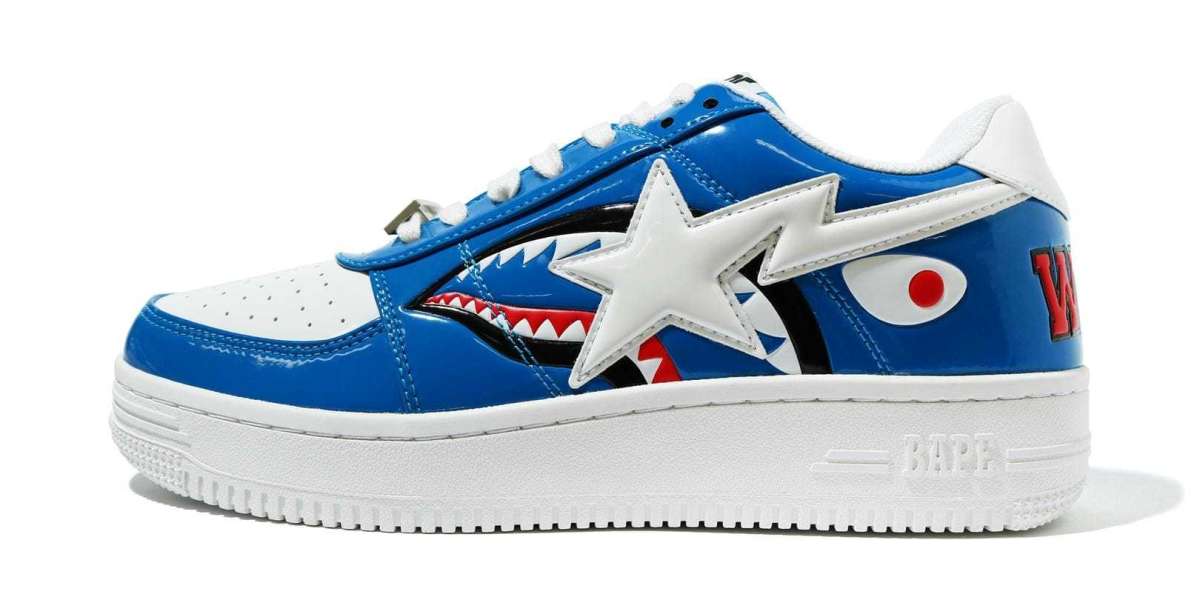The BAPESTA sneaker, created by Japanese streetwear label A Bathing Ape (BAPE), is more than just a fashion statement—it’s a cultural icon. Since its debut in the early 2000s, the BAPESTA has carved a unique space in sneaker culture. Bold, loud, and unapologetically different, it became a favorite among fashion-forward youth, musicians, and sneakerheads alike. With its unmistakable design and pop-culture relevance, BAPESTA has grown into a timeless streetwear essential. This article dives deep into the evolution, significance, and legacy of the BAPESTA sneaker and its ongoing influence on global fashion.
The Origins of BAPESTA and the Rise of BAPE
Founded by Nigo in 1993, BAPE (A Bathing Ape) began as a niche Japanese streetwear brand inspired by American hip-hop, vintage aesthetics, and Japanese pop culture. Nigo was heavily influenced by icons like Run DMC and The Beastie Boys, which translated into the rebellious spirit of BAPE’s designs. However, it wasn’t until the launch of the BAPESTA sneaker in 2002 that the brand catapulted into international fame.
BAPESTA drew direct inspiration from the Nike Air Force 1—a sneaker that defined urban culture in the United States. But instead of copying, BAPE reimagined the silhouette with its own flair. The Nike Swoosh was replaced with a lightning bolt-shaped star known as the “STA,” and colorways were more vibrant, often featuring patent leather in eye-popping combinations. These design choices made the BAPESTA immediately stand out, turning it into a statement piece.
The BAPESTA Design: Loud, Colorful, and Playful
What truly set the BAPESTA apart was its bold design approach. Where most sneakers leaned towards functional or minimalist aesthetics, the BAPESTA embraced maximalism. The use of glossy patent leather, contrasting panels, camouflage prints, and cartoon motifs made each pair unique. The sneaker quickly became a symbol of individualism and rebellion, challenging the norms of traditional sneaker design.
The BAPESTA logo—the signature lightning star—symbolized energy, power, and youth culture. This emblem, combined with the exaggerated color schemes, made the shoe both collectible and desirable. Celebrities and artists like Pharrell Williams, Kanye West, Soulja Boy, and Lil Wayne became early adopters, which further elevated the sneaker's status.
Hip-Hop and Celebrity Influence on BAPESTA’s Success
One of the key reasons for the BAPESTA’s widespread appeal was its association with hip-hop culture. BAPE was one of the first Japanese brands to effectively merge fashion and music, particularly the world of American rap. Pharrell and Kanye, two trendsetters of their time, frequently wore BAPESTAs in public appearances, music videos, and album covers. Soulja Boy even famously mentioned BAPESTA in his hit single “Crank That.”
These celebrity endorsements weren’t commercial deals; they were organic representations of street style and authenticity. Artists loved BAPE because it was different—it gave them a way to express individuality in a culture that valued uniqueness. As a result, the BAPESTA quickly gained cult status among youth who idolized these cultural icons.
Limited Editions and Hype Culture
Another reason for the BAPESTA’s success lies in its scarcity. BAPE pioneered the concept of “limited drops” long before it became mainstream. BAPESTAs were often released in small quantities and in exclusive colorways. Collaborations with other artists, brands, and designers added even more hype. From Marvel superheroes to SpongeBob SquarePants, BAPESTA embraced unexpected partnerships that pushed boundaries.
These limited releases created a frenzy among fans. The scarcity drove resale prices high and made each pair feel like a prized possession. Owning a BAPESTA became a status symbol, especially for those immersed in streetwear culture.
The Global Expansion and Legacy
What started in Tokyo’s Harajuku district soon spread across continents. BAPE opened flagship stores in New York, London, and Hong Kong, extending the BAPESTA’s influence far beyond Japan. The sneaker became a global phenomenon, helping to bridge the gap between Eastern and Western streetwear styles.
BAPESTA’s legacy is cemented not only in fashion but also in its cultural relevance. It proved that Japanese brands could set trends rather than follow them. It also played a crucial role in making sneakers high fashion, laying the foundation for future collabs between luxury brands and streetwear designers.
Revival and Modern-Day Relevance
While BAPESTA had its peak in the mid-2000s, the sneaker has seen a significant revival in recent years. With nostalgia for Y2K fashion growing, younger generations are discovering the charm of BAPESTAs. The brand has also reinvented the sneaker with modern tweaks while keeping the essence intact. Collaborations with new artists and influencers have kept the BAPESTA fresh and relevant.
In today’s fast-paced fashion ecosystem, few designs remain iconic. Yet, BAPESTA continues to thrive, adapting to trends while staying true to its roots. The brand has smartly balanced heritage and innovation, keeping the sneaker a mainstay on both the streets and the runways.
Cultural Symbolism and Artistic Statement
Beyond fashion, the BAPESTA represents a cultural shift. It symbolizes freedom of expression, the blending of cultures, and the power of creative identity. It’s more than just a sneaker—it’s a canvas of art and a badge of attitude. Wearing BAPESTA means embracing color, risk, and individuality in a world that often pushes conformity.
This is why it has remained popular for over two decades. It doesn’t just reflect fashion trends; it reflects the mindset of a generation that chooses to stand out.
Conclusion: Why BAPESTA Still Matters
The BAPESTA is not just a product of its time—it is a timeless representation of bold design, cultural fusion, and youth expression. It played a transformative role in the evolution of streetwear and the global sneaker industry. From its rebellious roots in Tokyo to its massive impact on Western fashion, BAPESTA has earned its place in the pantheon of iconic sneakers.



